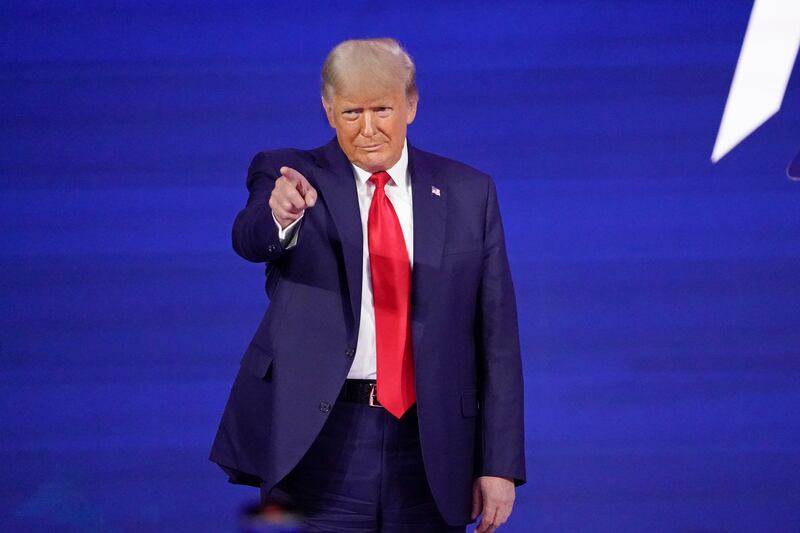Former President Donald Trump is plotting his return to social media after being deplatformed in January, but this time he’s looking to start his own social network.
“I’m doing things having to do with putting our own platform out soon,” Trump said on a podcast released Monday by Fox News contributor Lisa Boothe.
This new platform is expected out within the next three months, Trump adviser Jason Miller told Fox News “Mediabuzz” on Sunday. Miller said it would be “the hottest ticket in social media, it’s going to completely redefine the game.” He also said multiple companies had approached Trump about the possibility of starting a new social network.
Trump has been open about creating his own social platform since he was booted from Twitter two days after the deadly Jan. 6 attack on the U.S. Capitol. After his @realDonaldTrump account was taken down for violating Twitter’s Glorification of Violence policy, the @POTUS account tweeted, “We have been negotiating with various other sites, and will have a big announcement soon.”
The rise of partisan social media was a response to claims of liberal monopoly by mainstream social networks in the late 2010s. The platforms Gab, founded in 2016, and Parler, founded in 2018, characterized themselves as free-speech alternatives to Silicon Valley-based big tech companies, but they also attracted far-right extremists, white supremacists and conspiracy theorists. Users who had been banned from Facebook and Twitter joined, like Milo Yiannopoulos and Alex Jones.
Gab was forced offline by service providers including GoDaddy and PayPal in 2018 after the alleged Pittsburgh synagogue shooter was found to have an account that he used to post anti-Semitic messages. The site returned a week later with a new domain name registrar and host, but Parler emerged as the more polite alternative, with Republican lawmakers including Sens. Ted Cruz of Texas, Rand Paul of Kentucky, and Mike Lee of Utah signing up for accounts. Trump never joined Parler, but was reportedly in talks with the company as early as last summer, under the condition that he get a 40% ownership stake, according to BuzzFeed News.
After the Jan. 6 Capitol attack, Amazon suspended its hosting services for Parler, saying calls for violence on the site violated its terms of service. The social network was among the sites used by insurrectionists to organize the attack. Parler chief executive John Matze accused tech companies of a “coordinated attack” meant to “kill competition.” Parler relaunched last month, using “independent technology,” but neither it nor Gab is available on major app stores, like Apple’s or Google’s.
A Trump-founded social network could face similar issues with availability and services, and unless the platform had robust moderation, it would run the risk of being booted from app stores and providers of domain names, hosting services and security certificates.
It could also have trouble finding users outside of conservatives and Trump superfans. While there clearly is an audience for partisan social media — Parler said it had about 15 million users before it was taken offline — mainstream sites like Twitter, with 69.3 million U.S. users, per Statista, cater to much larger, more diverse audiences. What’s a social network where everyone shares the same politics but a safe space?
But maybe Trump just wants a place to post again.
In the same podcast where he introduced his forthcoming platform, Trump touted recent statements he had put out that were posted as screenshots on Twitter by journalists . It was almost like he never left. “We’re sending out releases, they’re getting picked up much better than any tweet,” Trump said.


